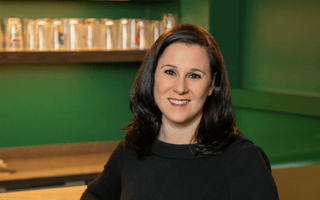Last year, Glu Mobile made a point to prioritize business continuity planning for the upcoming year. The threats for which the mobile game developer accounted?
“At that point, we prepped for natural disasters, technology breaches, power outages and safety incidents at our offices,” Heather Gille, global vice president of people and workplace, said.
The business continuity plan provided a blueprint from which the gaming company could adapt and respond to the current climate — or, as Gille described, “maintaining the velocity of operations, even if they looked a bit different.”
Preserving that operational clip has required immediate changes in many facets of the business, such as virtual interviews, at-home delivery of new employee onboarding materials and increasing the frequency of weekly town hall meetings, all while ensuring that traditional components — like Q1 performance reviews — don’t slip through the cracks.
“We are constantly communicating, iterating and preparing for how to keep our employees healthy, balanced and engaged for the long haul,” Gille said.
Tell us briefly about your team's contingency plan pre-COVID-19. What did it plan for?
Our teams identified business continuity planning as a priority for FY20. We kicked off this event in October 2019 and started by aligning to our guiding principles. We underscored employee safety, constant communication and unaffected gaming experiences for our players. At that point, we prepped for natural disasters, technology breeches, power outages and safety incidents at our offices.
The plans were designed for easy implementation and a variety of options and actions within each level. In those plans, we identified remote work options like Zoom, Slack and VPN access, but not to the degree that is necessary for COVID-19. As part of Glu’s business continuity planning, we were well-prepared for remote work with tools like Zoom, Slack, Jira and Office 365.
We underscored the importance of maintaining the velocity of operations.”
How has that contingency plan helped you respond in the face of the recent coronavirus outbreak?
Leveraging our existing business continuity plans, we started by aligning to our guiding principles. Aligning leadership under those pillars provided the necessary transparency and support needed to move from one level of action to the next. The plan itself was designed for swift implementation and a variety of options and actions within each level.
Once the organization transitioned to a remote workforce, we underscored the importance of maintaining the velocity of operations, even if they looked a bit different. That meant remote interviews with candidates and onboarding new employees with supplies delivered to their doorstep. All employees would continue to work, whether they were full-time, exempt or hourly. We converted training into virtual formats and held performance reviews for Q1 as scheduled.
We emphasized four areas for our managers: set clear expectations for employees to understand what success looks like; provide solid training opportunities to ensure people could thrive in the new environment; support in establishing ergonomic and productive remote work environments; and increase communications with your teams.
At the executive level, we increased the frequency of company town hall meetings to every two weeks. At these meetings, we highlight business performance, share best practices and use the venue to celebrate wins. As we track our technology tools, we’ve seen a tenfold increase in Zoom usage and a 45 percent increase in Slack communication. On the wellness front, we moved to publish a weekly newsletter highlighting best practices, consolidated resources on mental health and fitness and increased our virtual events to increase engagement. Our current engagement scores are averaging between 95 and 97 percent.
What's the most important lesson you've learned about contingency planning from recent events?
It was important to allow each office location to take direction from local authorities. What applies in California differs from what is necessary in India. Additionally, while we felt prepared for a short-term remote workforce, I don’t think anyone could have been prepared for the residual effects of working remotely as long as we have been. We are constantly communicating, iterating and preparing for how to keep our employees healthy, balanced and engaged for the long haul.






